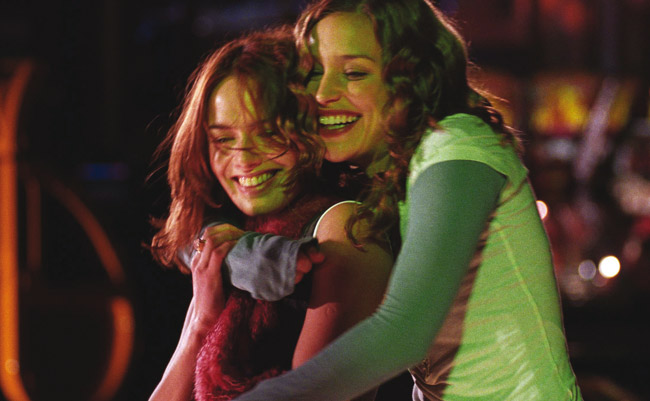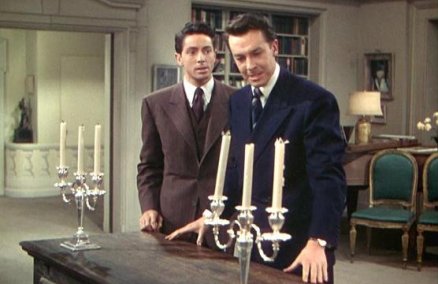The waltz, swing, cha-cha and rumba have been around for eons, but we’ve recently seen a new dance trend: Exotic dance. There are a growing number of studios and classes offering exotic dance in town, including lap dance and pole dancing. And it’s not just for the extra adventurous—every day gals are using exotic dance not only to spice up their lives but also as a form of cardio exercise. We ditched our modesty at the door of an exotic dance class and found out what all the fuss is about.
What’s Up
Exotic dance is a form of dance that encourages the dancer to shed his or her inhibitions, and can be performed with or without props (like chairs and poles). The idea is to inspire confidence. Julina Halim, 31, instructor and business director at thebodytalks dance school says, “It’s about bringing out each individual’s personality. Movements are specially designed and choreographed to help a woman exude her confidence and style.”
In Singapore, the majority of the students who sign up for these classes are women and classes are structured with women in mind. According to Firhana Alsagoff, 31, director and instructor of dance studio Groove, exotic dance particularly encourages women to express their sensuality through the moves. “Exotic dance is different from other sensual dances like the tango, as the lady gets to be in control of her body; she’s the one who is in charge and takes the lead.”
But classes are not full of sexual deviants. Joy Leng, founder and artistic director of SensUal Joy Lifestyle Studio categorizes learners of exotic dance into three groups. “People choose to dance for different reasons. Some come to learn something for themselves, as a hobby, and to build self-confidence in performance. Others want to learn a trick or two for their partners, and lap dancing is very popular in these instances. The last group of learners pick up dance moves to show them off on the dance floor.”
Increasing Your Heartrate
Exotic dance is not only about exploring one’s sexuality. For many participants, it provides a great way to shed the kilos as well, as we found when we tried an MTV Exotic routine at SensUal Joy Lifestyle Studio. Working your booty not only gets the heart pumping, but stretches the muscles too. Salim elaborates, “In exotic dance, we start off with exercises that tone the core muscles to get the body warmed up. We then work on body isolation, which engages the smaller, inner muscles that we may not usually engage in our everyday movement. This includes the shoulders, rib cage, upper and lower abdomen and back. All the work you put in is great for increasing flexibility and toning."
For instance pole dancing can be a hard physical workout. Alsagoff explains, “Pole-work requires a high level of discipline. You will find that it’s more than a sensual dance, but a really difficult form of exercise.” “The pole works on the abdomen, chest, the biceps and triceps as you are using your own body weight as resistance,” Salim explains. “It takes a lot of strength and control to be able to execute the movements with grace. You must be able to hoist yourself up in the first place!”
Leng points out that people who do exotic dance typically get “weird looks” from others, who think that they are of a “certain inclination.” But many students chose exotic dance for reasons as routine as variety and a chance to tap into their creative potential. Lori Chew, 26, a business manager who takes lessons at Groove says, “People usually tend to associate exotic dance with something erotic and somewhat sleazy, but it really is something fun and I look at it as something positive and liberating.”
Her fellow classmate Lavin Goh, 39, senior business development manager, adds, “I wanted more diversity in my fitness program besides aerobics and strength building.” Events coordinator Anne Jakobsen, 42, who does a wide variety of sports from ball games to ballet and jazz ballet also states: “Exotic dance is no different because it presents physical and mental challenges. It is also about finding your sexual identity and adding more creativity to your sexual life.”
Boys Toys
Although exotic dance classes are mainly frequented by women at the moment, the men are beginning to take an interest as well. “We do get a fair number of phone calls from guys who are interested in taking classes. There has been much talk about offering exotic dance for men,” Alsagoff points out, “Perhaps we should remove the stereotype that the role to entertain or be sexy is not solely limited to women. Exotic dancing for men is definitely something worth considering.”
For the boys who are dying to get it on, couples classes are a good way to get into the groove and stop feeling shy. “Couples classes are offered to those who want to try something new, and they usually go through lap dance routines with us. They have a lot of fun, and there is usually a lot of laughter, but letting go is really the whole point,” says Leng.
So for a change to the mundane workout routine, to explore your hidden desires or just for a few laughs, exotic dance might be the perfect solution. Just leave your inhibitions at the door.
So You Think You Can Dance?
Not getting enough action? Want to impress your latest date? Here’s a quick step-by-step guide to a pole dance sequence—the “spinner”—to free your inner sex bomb.
 Step 1: Grab pole at a spot above your head with your right hand. Take four steps around the pole, starting with the inner foot.
Step 1: Grab pole at a spot above your head with your right hand. Take four steps around the pole, starting with the inner foot.
Step 2: On the fifth step (that should be on the inner foot), lift your left leg up parallel to the ground and point.
Step 3: Spring up and bring your left arm in and grab the pole with your left hand while hooking your left ankle around the pole simultaneously. Quickly kick your right leg up, parallel to the ground, bent away from the pole.
Step 4: You will start twisting down the pole. Be graceful!
Step 5: Land softly and remember to give your most sexy pout and find those bedroom eyes.
Advertisement


























